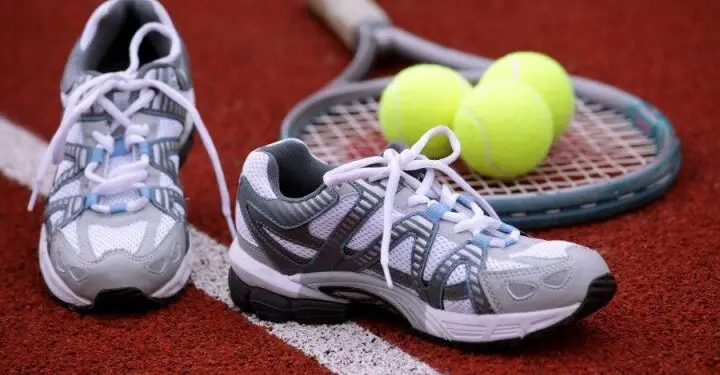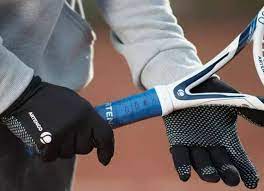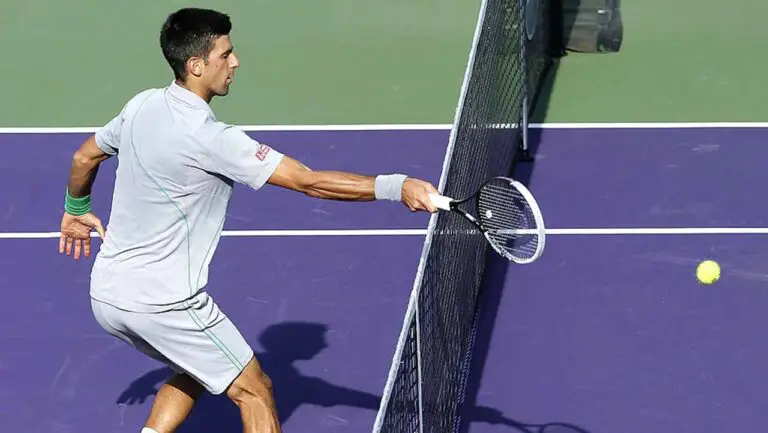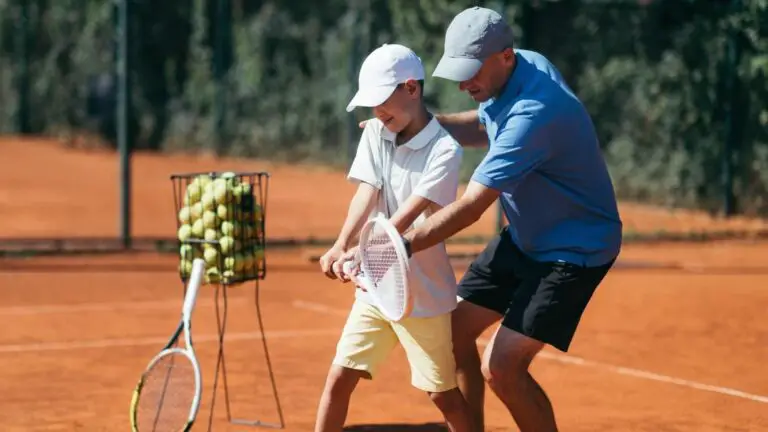How To String A Tennis Racket Without A Machine?
Tennis is an exhilarating sport that requires precision and the right equipment. One key aspect of a tennis player’s gear is the racket. Properly stringing a tennis racket is crucial for optimal court performance. While many players rely on stringing machines, you can still accomplish a well-strung racket without one.
To string a tennis racket without a machine, follow these steps: Secure the racket, weave strings through grommets with proper tension, tie knots securely, and trim excess string. Be patient, as it requires practice for optimal results.
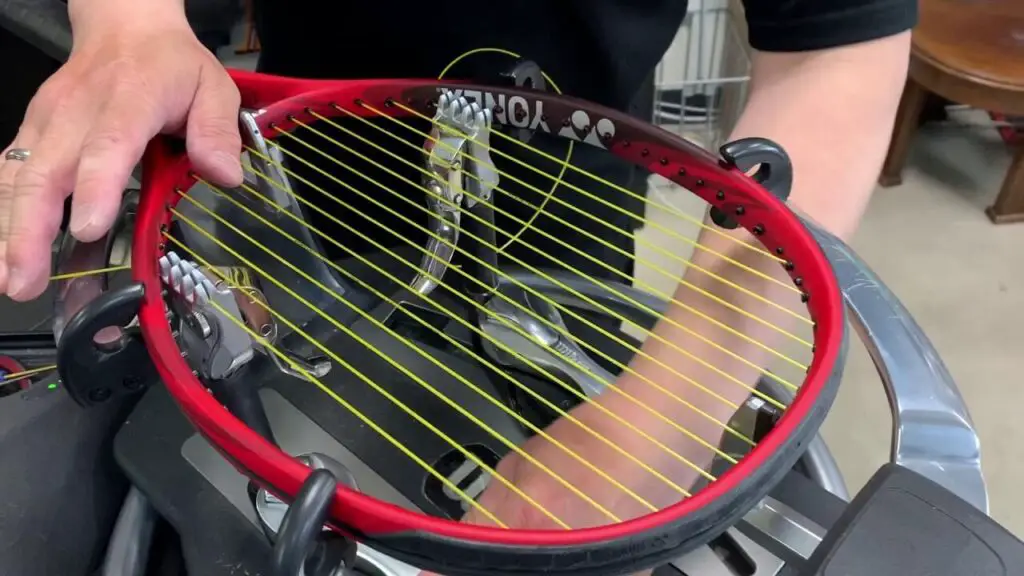
This guide will walk you through the steps to string a tennis racket without a machine using simple tools and techniques. Let’s dive in!
Why Stringing Matters?
The tension and quality of your racket’s strings impact your performance. Properly strung strings enhance control, power, and feel during your shots. Regular string maintenance prevents string wear and tear, ensuring consistent playability.
Step By Step Method To String A Tennis Racket Without A Machine
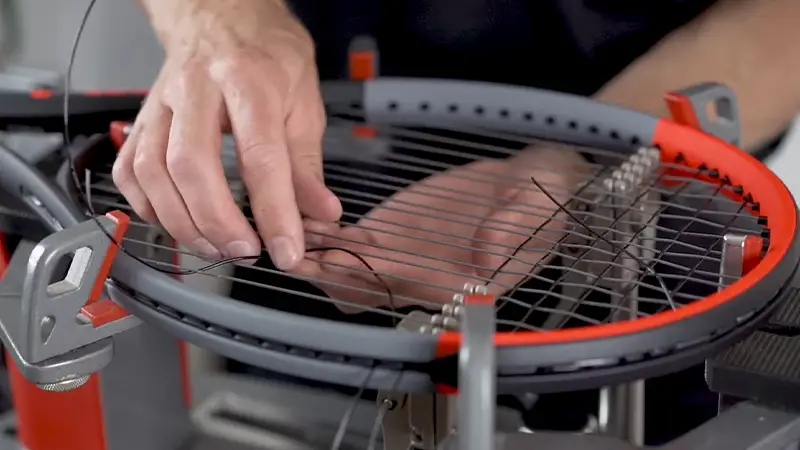
1. Gather Your Tools
Before you begin, gather essential tools: a high-quality string, a racket, a string cutter, grip clamps, and a starting clamp. These tools are readily available at sports stores or online shops.
2. Choose the Right String
Selecting the correct string is pivotal. Consider your playing style and skill level. Natural gut, multifilament, or synthetic strings each offer distinct characteristics. Consult experts or fellow players for recommendations.
3. Prepare the Racket
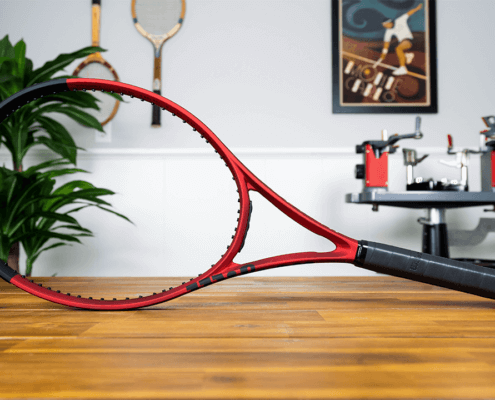
Remove the old strings and thoroughly clean the racket’s frame. Use a grip clamp to secure the racket to a sturdy surface. This prevents unwanted movement while stringing.
4. Securing the Frame
Use the starting clamp to secure the string at the bottom of the racket. Leave a short length extending upwards to tie off later. Stringing begins with the cross strings.
5. Starting the Stringing Process (Cross Strings)
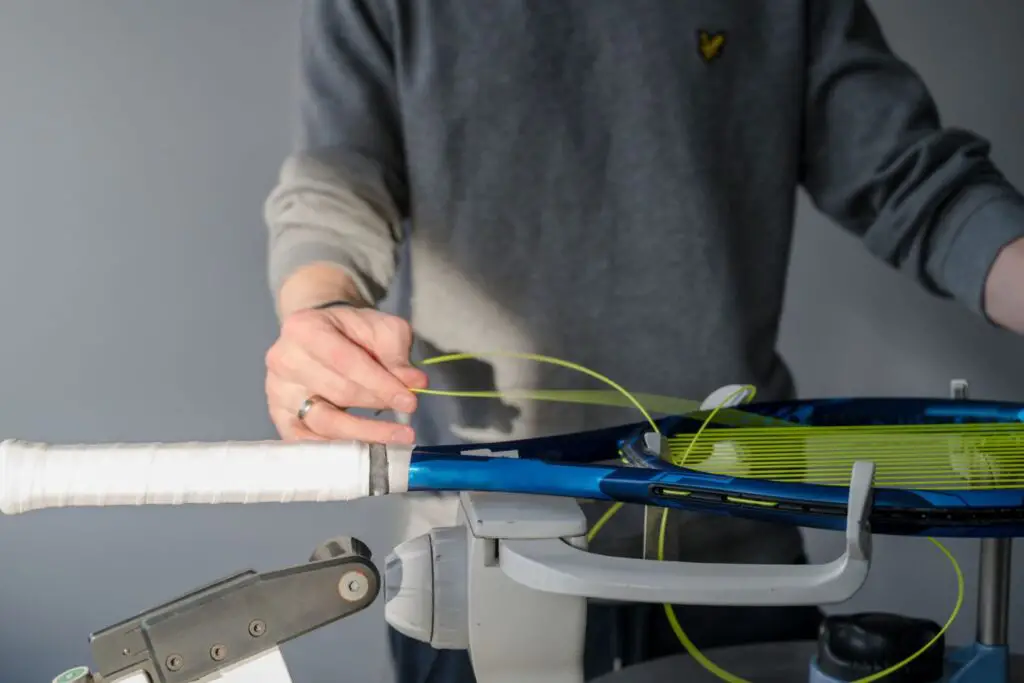
Weave the string through the bottom grommets, following a zigzag pattern. Maintain gentle tension to avoid slack. Cross strings are vital for stabilizing the racket head.
6. Maintaining Proper Tension
Consistent tension is critical. Without a machine’s digital control, rely on your feel to maintain even pressure throughout the stringing process. Adjust carefully using your hand or starting clamp.
7. Moving to the Main Strings
With the cross-strings set, move to the main strings. Weave the string vertically, carefully passing it through the grommets. Use your thumb as a guide to create uniform spacing.
8. Dealing with Knots
Knots can disrupt your game. Prevent them by weaving the string back through the last two main string grommets. This locks the strings and maintains tension.
9. Tying Off the Strings
As you reach the desired tension, tie off the main strings. Use a secure knot like the double half-hitch knot. Ensure the knot is tight and sits flush against the grommet.
10. Fine-Tuning the Tension
After tying off, fine-tune the tension by plucking each string. The pitch should be consistent. Adjust where needed, but be cautious not to over-tighten.
11. Moving to the Cross Strings
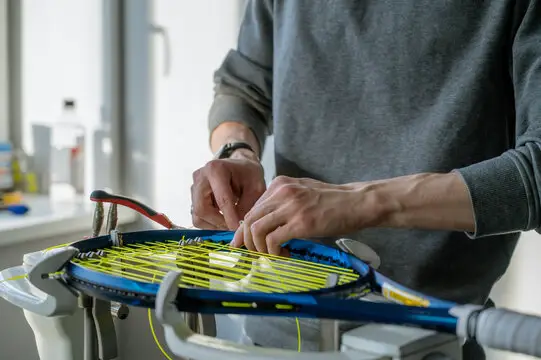
Return to the cross strings, following the same weaving pattern. Maintain tension and spacing as before. Cross strings provide stability to the racket face.
12. Trimming Excess String
Once all strings are in place, it’s time to trim the excess string. Leave a small tail for each string, and use the string cutter to trim carefully. Avoid cutting too close to the knot.
13. Final Checks
Give your racket a thorough once-over. Check for any loose strings, uneven tension, or missed knots. Make necessary adjustments before you step onto the court.
“Learn how to string your tennis racket without a machine! Check out this informative Quora post that guides you through the step-by-step process, offering tips and insights for a rewarding DIY experience.”
Tips for Stringing a Tennis Racket Without a Machine
Stringing a tennis racket without a machine might initially appear challenging, yet with the proper practice and guidance, you can hone this skill for optimal racket performance.
Here are valuable tips to lead you through the process:
- Consider using pliers delicately to secure them when encountering slightly loose knots. This action ensures your strings remain firmly fastened, guaranteeing steadfast play.
- Safeguard knots from slipping by cinching them against the racket’s grip. This additional precaution preserves string tension, upholding your racket’s prime condition.
- If you encounter difficulty puncturing the grip with a needle, use a sharp knife or a nail instead. Exercise caution to avoid harming the grip or your fingers.
- In moments of need, dental floss or fishing line can substitute for stringing your racket. Their slender, flexible nature eases manipulation, particularly when navigating tight spots.
- To facilitate weaving the string through grommets, consider utilizing a crochet hook or chopstick for additional leverage. These implements aid in guiding the string through with greater ease.
- When cutting the excess string after tying knots, be sure to cut it as close to the knot as possible. This prevents fraying and maintains a neat appearance. It also ensures that the cut ends won’t interfere with your gameplay.
Explore the Reddit, and Tennis Warehouse community for expert insights on self-stringing your racquet. This resource offers valuable guidance to enhance your stringing skills conveniently.
Benefits of Stringing a Tennis Racket Without a Machine
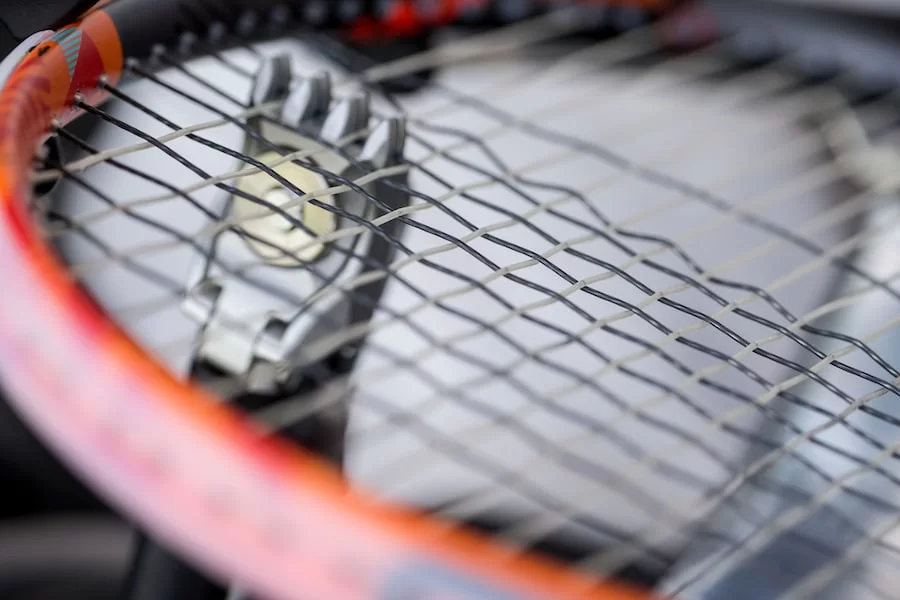
Stringing a tennis racket without a machine might take a bit more effort, but there are some advantages to doing it this way:
Connection to Your Gear
When you manually string your racket, you gain a deeper insight into its mechanics. This strengthened connection enhances your understanding of your racket’s performance on the court, fostering a more engaged playing experience.
Personalized Tension
With manual stringing, the advantage of adjusting the tension of each string lies in your hands. This personalization empowers you to fine-tune the racket’s response to your preferences, potentially enhancing your overall gameplay.
Cost Savings
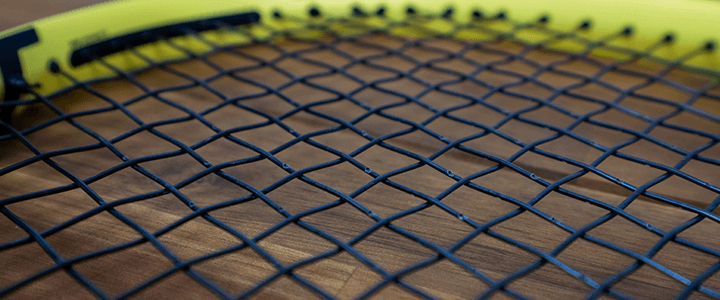
Opting for manual stringing presents an opportunity for financial savings. You reduce your expenses and allocate resources more efficiently by circumventing the need to purchase or maintain a machine.
Valuable Skill
The acquired skill of stringing a racket manually holds intrinsic value. In scenarios where machine access is limited or unavailable, this skill ensures that you’re equipped to maintain your racket’s performance independently.
Sense of Accomplishment
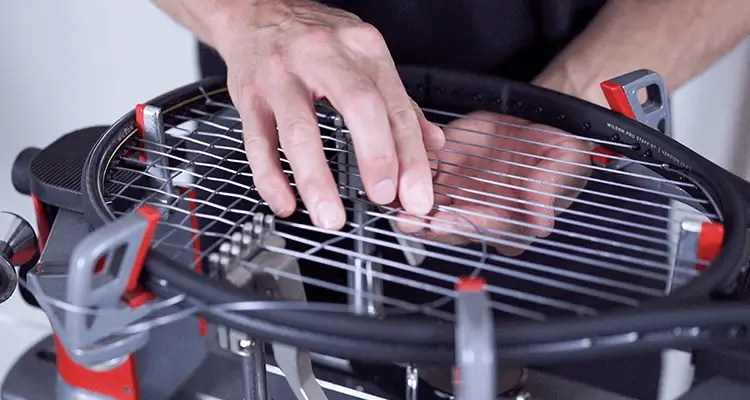
Completing the manual stringing process and witnessing your racket excel on the court cultivates a genuine sense of achievement. Knowing you’ve achieved this feat on your own bolsters your confidence.
Customization
Manual stringing allows you to experiment with various strings and tension levels. This exploration will enable you to discover the optimal combination that aligns with your playing style, potentially elevating your prowess on the court.
Check out this quick Youtube video I provided for your convenience on “How To String a Tennis Racket Without a Machine,” for easy step-by-step instructions.
Practice for Emergencies
Imagining a scenario where a string snaps mid-match underscores the significance of manual stringing. Proficiency in this skill equips you with a solution to swiftly address such situations, preventing interruptions to your game.
Understanding Racket Mechanics
Delving into manual stringing offers insight into the intricate interplay between the strings and the racket’s frame. This comprehension deepens your knowledge as a player, potentially influencing strategic decisions during gameplay.
Enhanced Focus
Manual stringing demands unwavering concentration and meticulous attention to detail. This heightened focus not only aids in the stringing process but can also translate into a heightened sense of engagement during matches.
Drawbacks of Stringing a Tennis Racket Without a Machine
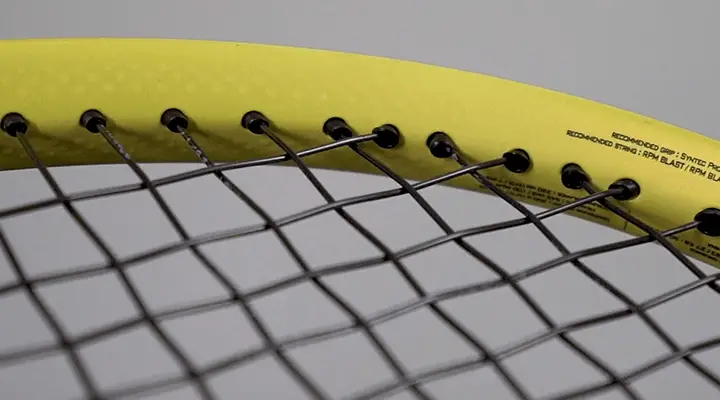
While there are advantages to manual stringing, it’s important to acknowledge potential drawbacks:
Inconsistent Tension
Achieving uniform string tension manually can be complex. This may influence racket performance and impact the sensation of your shots.
Time Consumption
Manual stringing demands more time than machine-assisted methods. If time is scarce, there might be more practical options.
Skill Prerequisite

Manual stringing necessitates practice and skill. Beginners might need help to achieve the precision machines offer, affecting the final result.
Limited Precision
Machines excel in precise tension adjustments, ensuring evenness. Manual stringing might attain a different precision, affecting uniformity.
Physical Exertion
The manual process involves physical effort, particularly when tensioning strings. Stringing multiple rackets is tiresome.
Error Risk
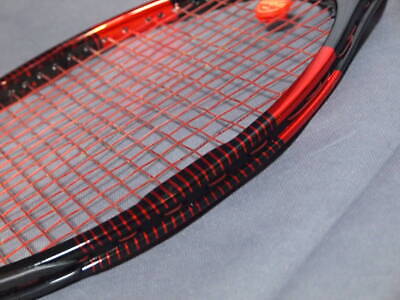
For those unfamiliar with manual stringing, errors are possible. This might lead to improper tension, string breakage, or other setbacks.
Reduced Convenience
Unlike machines, manual stringing is less convenient and swift. Those seeking efficiency might find it less appealing.
Challenge for Novices
Beginners might find manual stringing overwhelming. The absence of machine guidance could lead to frustration and suboptimal outcomes.
Stringing your own tennis racket without a machine might seem daunting, but it’s doable with the right guidance. Check out this Reddit link.
Frequently Asked Questions
Q1: Can I use any string for my racket?
Certainly, the string choice relies on your playing style and preferences. Natural gut offers a classic touch, while synthetic strings emphasize durability.
Q2: How often should I restring my racket?
It’s advisable to restring your racket approximately every 40 hours of gameplay or every few months, depending on your frequency of play.
Q3: Can I string a racket without any prior experience?
Indeed, while prior experience can assist, this comprehensive guide furnishes beginners with step-by-step instructions, enabling thriving racket stringing.
Q4: What happens if my strings are too tight?
Strings wound excessively tight can result in diminished power and a harsher feel during play. Opt for a tension that aligns with your playing approach.
Q5: Is hand stringing more time-consuming than using a machine?
Yes, hand stringing does demand more time and practice. However, the degree of control and rapport you establish with your racket justifies the endeavor.
Conclusion
Stringing a tennis racket without a machine is an enriching endeavor that connects you closely to your gear and the sport’s heritage. While it demands patience and practice, the personalized touch, cost savings, and sense of accomplishment make it a skill worth mastering. So, embrace the process, enhance your playing experience, and enjoy the rewards of a racket strung with your own hands.
REFERENCES
- https://www.reddit.com/r/tennis/comments/2nut1e/stringing_your_own_racquet/
- https://tt.tennis-warehouse.com/index.php?threads/using-no-machine-to-string-a-racket.262748/
- https://www.quora.com/How-do-you-string-a-racket-without-a-stringing-machine
- https://www.tennisforum.com/threads/stringing-a-tennis-racquet.298966/



